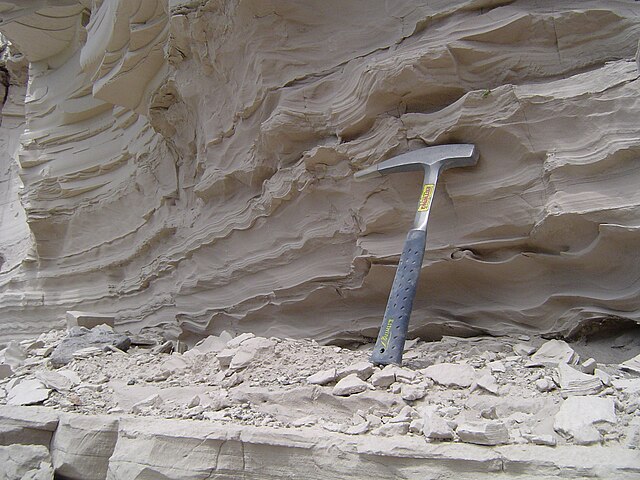Conglomerate is a clastic sedimentary rock that is composed of a substantial fraction of rounded to subangular gravel-size clasts. A conglomerate typically contains a matrix of finer-grained sediments, such as sand, silt, or clay, which fills the interstices between the clasts. The clasts and matrix are typically cemented by calcium carbonate, iron oxide, silica, or hardened clay.
Boulder of conglomerate with cobble-sized clasts. Rock hammer for scale.
Carmelo Formation (conglomerate) at Point Lobos
Nagdong Formation at Sangju
A conglomerate at the base of the Cambrian in the Black Hills, South Dakota.
Clastic rocks are composed of fragments, or clasts, of pre-existing minerals and rock. A clast is a fragment of geological detritus, chunks, and smaller grains of rock broken off other rocks by physical weathering. Geologists use the term clastic to refer to sedimentary rocks and particles in sediment transport, whether in suspension or as bed load, and in sediment deposits.
A thin section of a clast (sand grain), derived from a basalt scoria. Vesicles (air bubbles) can be seen throughout the clast. Plane light above, cross-polarized light below. Scale box is 0.25 mm.
Claystone from Montana
Conglomerate
Breccia. Notice the angular nature of the large clasts








